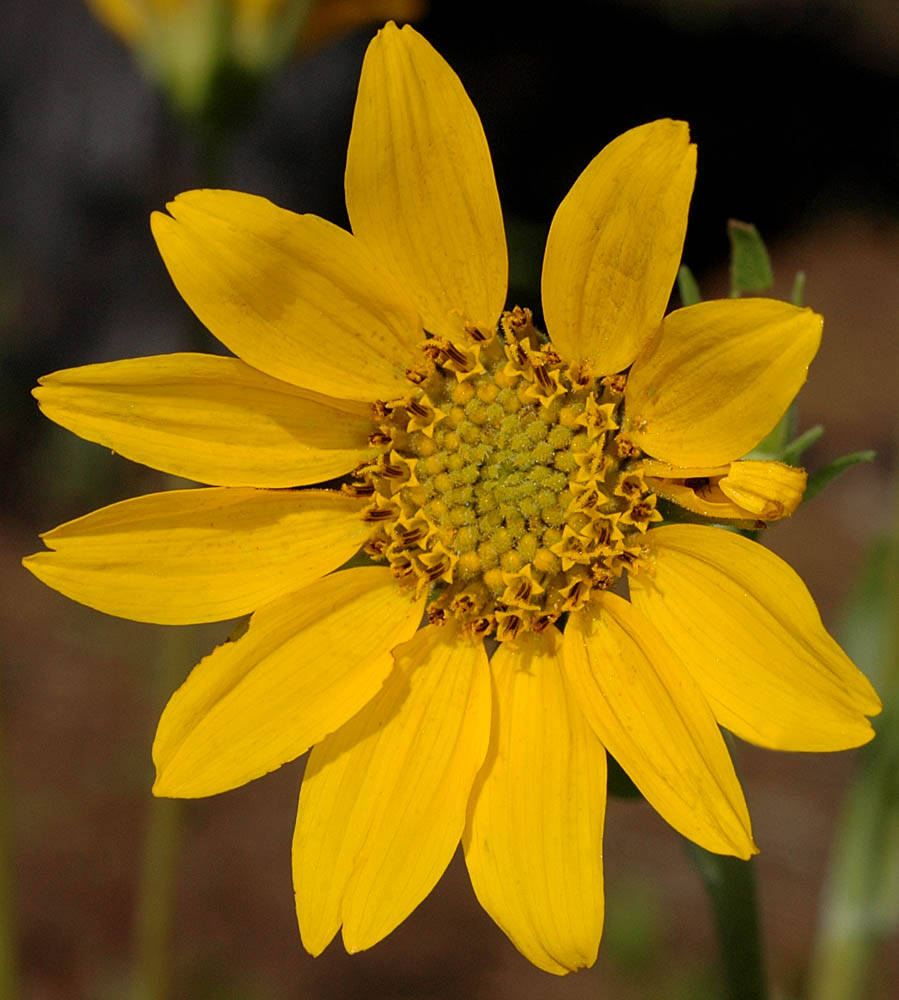Balsamorhiza
Balsamorhiza macrophylla
balsamroot
large-leaf balsamroot
erect, scapose, unbranched.
up to 35 cm, tomentose; from single taproot.
mainly basal; simple or pinnately compound, lanceolate to ovate;
cauline opposite, sometimes 1 additional pair of reduced cauline leaves alternate.
lanceolate-oblong, 1-pinnately divided;
pinnae toothed, with teeth only on lower margins;
surfaces tomentose;
basal leaves in 1–few rosettes;
blades 12–22 × 6–8 cm;
pinnae 10–36 mm wide;
petioles 7–20 cm;
cauline blades 1.5–5 × 0.3–0.9 cm;
petioles 6–9 cm.
with 1 main head, occasionally with up to 6 axillary heads per stem.
with 1 terminal head.
broadly campanulate to hemispheric.
14–18 × 25–30 mm.
flat to convex, paleate.
pistillate;
corollas yellow or rarely pink to red.
14–16, yellow;
rays 35–40 × 8–11 mm.
bisexual;
corollas yellow, 5-lobed.
~9 mm.
in 2–4 series; outer equaling or surpassing inner.
ovate-lanceolate, 20–25 × 5–6 mm;
tips acuminate, tomentose.
4-sided; black, glabrous or strigillose;
pappi 0.
8–9 mm, glabrous.
radiate.
lanceolate; acute, folded around fruits.
10–12 mm.
=100 ± 2.
Balsamorhiza
Balsamorhiza macrophylla
Western Canada and United States. 12 species; 10 species treated in Flora.
Balsamorhiza is most closely related to Wyethia, from which it is distinguished by being scapose. Balsamorhiza is divided into two sections, both of which occur in Oregon. Section Artorhiza has cordate or sagittate, simple leaves; a taproot bearing multiple crowns; alternate stem leaves above the pair of opposite leaves; and often multiple heads per stem. Section Balsamorhiza has generally pinnately divided leaves (often simple in B. serrata); taproots bearing one or at most two crowns; one pair of opposite stem leaves; and a solitary head per stem. All species of Oregon Balsamorhiza have a chromosome number of n=19 and hybridize when they come together except for the polyploid B. macrophylla. Intersectional hybridization merely produces hybrid swarms, while intrasectional hybridization tends to produce widespread clines, leading to taxonomic confusion. Hybrid swarms are easily distinguished in the field by the wide variation in leaf division and pubescence within a given population. In the herbarium, when only one plant per population is present, hybrids are best distinguished by possessing leaves that are not as deeply divided as would be expected for the most similar-looking member of section Balsamorhiza, or by plants with pinnately divided leaves having either multiple heads per stem or alternate, in addition to opposite, stem leaves. Widths of heads are those of pressed specimens. Widths of pinnae are the width of full-sized pinnae from the middle of a fully developed leaf at their widest point (not including any lobes that may be present).
Dry, open areas. Flowering May–Jul. 700–1400 m. BW. ID; east to WY. Native.
True B. macrophylla is a decaploid centered on the Wasatch Mountains in Utah and Idaho. The plants in Oregon and western Idaho are also high polyploids, but they differ morphologically from classic B. macrophylla in their denser pubescence and the shape of their leaves. These eastern plants have been given the name B. macrophylla var. idahoensis. However, further study will likely show that they have a different parentage than B. macrophylla s.s. The specific epithet “macrophylla” means large-leaved, as the leaves are much larger than those of the other members of section Balsamorhiza.
Abigail (Abby) Moore



